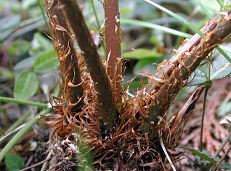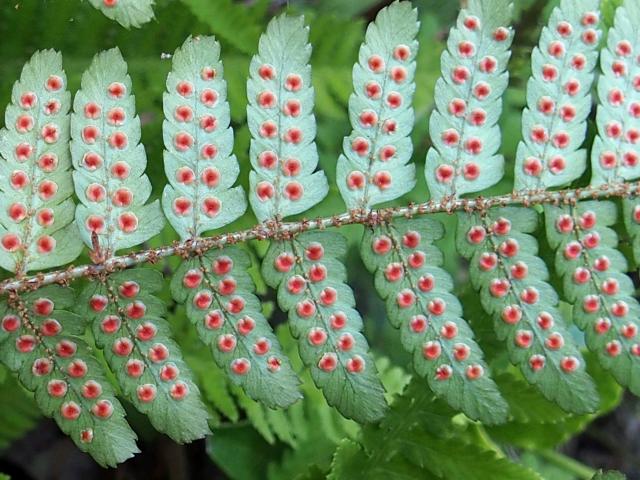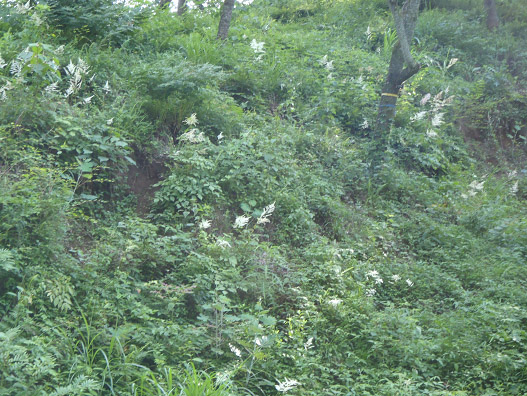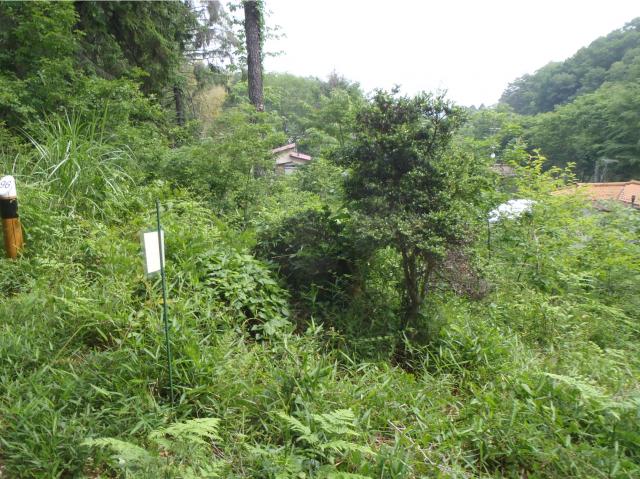Home > Highlights from the garden > How about enjoying the flowering plants and ferns too?
Main content starts here.
How about enjoying the flowering plants and ferns too?
Altogether, 775 species of wild plants have been recorded in the Science Garden (as of2010), including both the trees marked for exhibit and those that are not. These species can be seen in the botanical woodland areas, the Cherry tree Preservation Forest, and other locations in the Science Garden.In the Science Garden, you can enjoy not only the trees and cherry blossoms but also the flowering plants that bloom at your feet throughout the season. Among these wild plants are the ferns, which neither blossom nor produce berries. Blended among green vegetation, ferns may be hard to pick out. Still, ferns find a host of uses in gardening and ikebana-bracken ferns, royal ferns, and ostrich ferns are edible wild plants in their sprout form, Gleichenia japonica is used as a new year decoration, lycopodium is used as a food garnish, and the Japanese climbing fern and koshida are used as materials for baskets the squirrel's foot fern and selaginella tamariscina are also put to use for gardening and ikebana. Historically, ferns have been linked to our everyday lives.Why don't you get to know them better?
|
|
Getting ready to observe flowering plants and ferns
It would be a good idea to take a magnifying glass along so that you can observe the finer details. Binoculars are also handy for getting a look at flowers blooming at a distance from the walking routes. It is probably best to wear long sleeves to protect your skin from UV light. Also, it is safer to avoid wearing black clothes-they heat up in the sun, attracting bees.
About ferns
A lot of people are not very familiar with ferns, so let's talk about them briefly first. About 630 species of fern have been recorded in Japan, and the Tama Forest Science Garden has about 80 of them. Over 30 species of ferns, growing near the walking routes where they can be easily observed, are marked with signs and information. People say that ferns are hard to tell apart because they all look alike, but some of them don't look like ferns at all. In many cases, even ferns that resemble each other closely have distinguishing features that allow you to easily tell them apart if you know where to look. Some of the characteristics to look for are the shape, color, and attachment style of the sporangium and indusium. Most ferns produce spores in early-summer, so this is the best season for observing them. If you are looking at the indusia of the Japanese shield fern, you will probably be surprised at how red they are. The shape and color of the scales on the leaf stalks are also a characteristic to look for.
|
Scales on the yamainuwarabi |
Indusia of the Japanese shield fern |
Herbaceous plants
Even after the cherry-blossom viewing season has finished, you can still enjoy the wild flowers in the Cherry Tree Preservation Forest. To make the experience even better, we have changed the frequency and method of weeding since 2013. Consequently, you may feel that the bused are growing more thickly than used to. Conversely, there are now more flowers from summer through fall than before, so please enjoy them to the fullest. You may also notice that the new signs give a different name for the plant family than the illustration would suggest. This is because we are updating the signs as the research on the classification of plants progresses. The Tama Forest Science Garden is a research institute, so we are proactive about using the new classifications and introducting them in the display signs in the Science Garden. Arboretum No. 3 is also a good place for observing flowering plants. Here, you can observe many herbaceous plants and ferns at your leisure. There are lots of slopes in the Sciene Garden, and not much shade in the Cherry Tree Preservation Forest, so be careful not to over-exert yourself while you enjoy observing the plants.
|
|
|
Copyright © Forest Research and Management Organization. All rights reserved.





